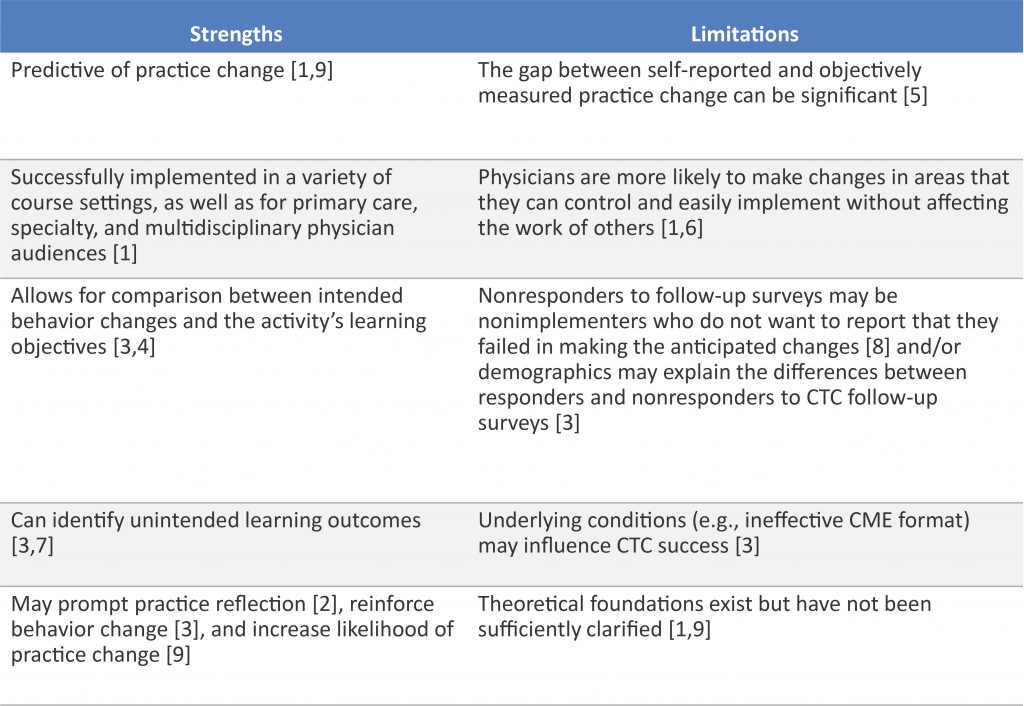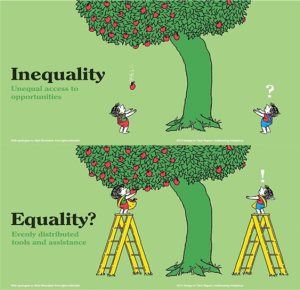
References:
- Wakefield JG. Commitment to change: exploring its role in changing physician behavior through continuing education.J Contin Educ Health Prof.2004;24:197-204. (abstract)
- Lowe M, Rappolt S, Jaglal S, MacDonald G. The role of reflection in implementing learning for continuing education into practice. J Contin Educ Health Prof.2007;27:143-8. (abstract)
- White MI, Grzybowski S, Broudo M. Commitment to change instrument enhances program planning, implementation, and evaluation. J Contin Educ Health Prof. 2004;24:153-62. (abstract)
- Lockyer JM, Fidler H, Ward R, Basson RJ, Elliot S, Toews J. Commitment to change statements: a way of understanding how participants use information and skills taught in an educational session. J Contin Educ Health Prof.2001;21:82-9. (abstract)
- Adams AS, Soumerai SB. Evidence of self-report bias in assessing adherence to guidelines. Int J Qual Health Care.1999;11:187-92. (abstract)
- Fidler H, Lockyer JM, Toews J, Violato C. Changing physicians’ practices: the effect of individual feedback. Acad Med.1999;74:702-14. (abstract)
- Dolcourt JL, Zuckerman G. Unanticipated learning outcomes associated with commitment to change in continuing medical education. J Contin Educ Health Prof.2003;23:173-81. (abstract)
- Dolcourt JL. Commitment to change: a strategy for promoting educational effectiveness. J Contin Educ Health Prof.2000;20:156-63. (abstract)
- Overton GK, MacVicar R. Requesting a commitment to change: conditions that produce behavioral or attitudinal commitment. J Contin Educ Health Prof. 2008;28:60-6. (abstract)
Please confirm that you are not a robot.












